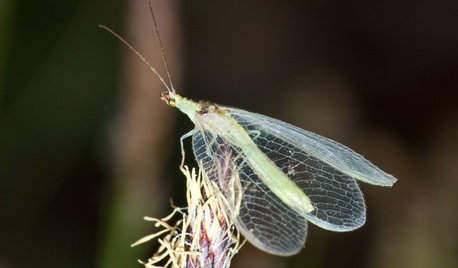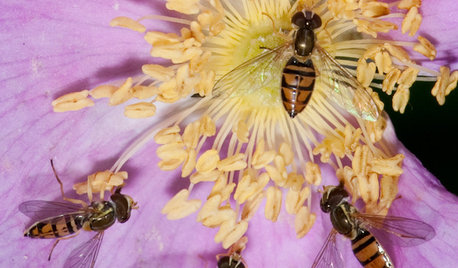Does this look like insect damage to grass?
lowcountrybird
11 years ago
Related Stories

GARDENING GUIDESLook Out for Lacewings: Beneficial Insects Coming to a Garden Near You
Lacewings are delicate insects that produce alligator-like, hungry offspring that devour aphids and other garden pests
Full Story
GARDENING GUIDESGreat Design Plant: Helianthus Maximiliani Attracts Beneficial Insects
Maximilian sunflower’s striking yellow flowers light up the fall landscape and attract pollinators and beneficial insects at a crucial time
Full Story
GARDENING GUIDESThis Fly Is One of the Most Beneficial Insects Around
Meet the syrphid fly, a colorful pollinator that also beats chemicals for controlling aphids and other garden pests
Full Story
WINDOW TREATMENTSA Surefire Way to Prevent Sun Damage Indoors
Why let light ruin your furniture, floors and artwork, when the solution could be as simple as applying high-quality window film?
Full Story
GARDENING GUIDESGreat Design Plant: Purple Needle Grass, California’s State Grass
The long-lived, drought-tolerant Stipa pulchra is as admired for its benefits as for its good looks
Full Story
LANDSCAPE DESIGNDoes Your Landscape Need a Little ‘Cosmic Latte’?
Beige — the color of the universe — can be both building block and backdrop in a contemporary garden
Full Story
INSPIRING GARDENSInside Houzz: A Waterfront Property Ditches the Grass for a Garden
New drought-tolerant plantings and outdoor gathering spaces help this California backyard take in the view without wasting space or water
Full Story
LANDSCAPE DESIGNIs It Time to Consider Fake Grass?
With more realistic-looking options than ever, synthetic turf can be a boon. Find the benefits and an installation how-to here
Full Story
GRASSES10 Ways to Use Ornamental Grasses in the Landscape
These low-maintenance plants can add beauty, texture and privacy to any size garden
Full Story
GARDENING GUIDESSmall Gem Lawns: More Impact From Less Grass
Instead of letting the lawn sprawl, make it a shapely design element in your yard. You’ll reap benefits both practical and aesthetic
Full StoryMore Discussions








dchall_san_antonio
lowcountrybirdOriginal Author
Related Professionals
Canton Landscape Architects & Landscape Designers · Tempe Landscape Architects & Landscape Designers · Birmingham Landscape Architects & Landscape Designers · Rossville Landscape Architects & Landscape Designers · Seabrook Landscape Architects & Landscape Designers · South Orange Landscape Architects & Landscape Designers · Cockeysville Landscape Contractors · Coram Landscape Contractors · Cudahy Landscape Contractors · Dudley Landscape Contractors · Hollywood Landscape Contractors · Palos Verdes Estates Landscape Contractors · The Woodlands Landscape Contractors · Camp Springs Landscape Contractors · Citrus Heights Swimming Pool Buildersgoren
lowcountrybirdOriginal Author
dchall_san_antonio
lowcountrybirdOriginal Author
lowcountrybirdOriginal Author
lowcountrybirdOriginal Author